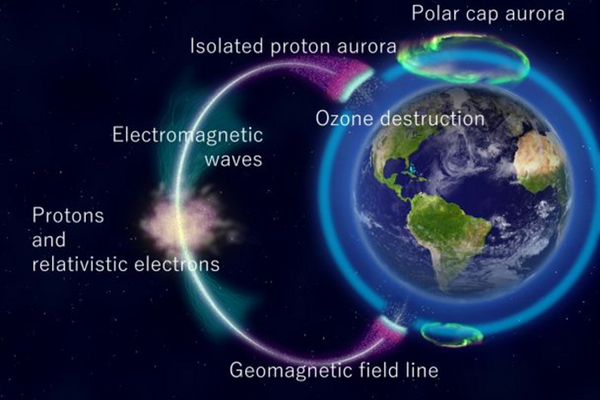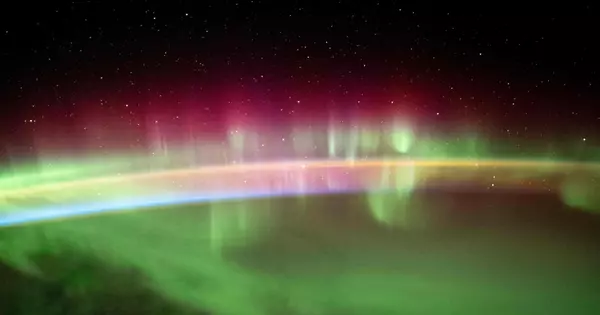If you happen to be near the North or South Poles, you might be in for a treat. Beautiful light shows in the sky occur frequently. These are known as auroras. It is known as the aurora borealis or northern lights if you are near the North Pole. If you’re near the South Pole, it’s known as the aurora australis, or southern lights.
Auroras produce spectacular light displays in the night sky, but they also shed light on another reason the ozone layer is depleting. Although humans are responsible for much of the ozone layer’s depletion, observations of a type of aurora known as an isolated proton aurora have revealed a source of ozone depletion from space: Charged particles in plasma ejected by solar flares and coronal mass ejections continue to eat away at the ozone layer. The impact of these particles was previously unknown.
An international research team has discovered that the effects of isolated proton auroras caused a nearly 250-mile-wide (400-kilometer) hole in the ozone layer, which gaped right below where an aurora occurred. The majority of the ozone vanished in about an hour and a half. The researchers had not expected nearly as much ozone to degrade as a result of this phenomenon, they explained in a statement.
Even though mesospheric ozone damage heals faster than stratospheric ozone holes (which are frequently caused by human activity), isolated proton auroras continue to influence atmospheric changes. Satellites and electrical infrastructure can be affected by space weather, and charged particles pose a risk to astronauts.
Isolated proton auroras are not as bright as the northern and southern lights, but they are still visible to the naked eye. The sun’s outpouring of plasma contains highly energetic ions and electrons. Such particles become trapped in Earth’s inner and outer Van Allen radiation belts, preventing them from directly bombarding the planet and turning it into a sun-blasted wasteland like Mars.
The Sun sends us more than just heat and light; it also sends us a lot of other energy and small particles. The protective magnetic field that surrounds Earth shields us from the majority of the energy and particles that we don’t even notice. However, the Sun does not always send the same amount of energy. There is a constant stream of solar wind, as well as solar storms. The Sun burps out a huge bubble of electrified gas that can travel through space at high speeds during one type of solar storm called a coronal mass ejection.

Particles that make it to the inner radiation belt can mess with Earth’s atmosphere when they sneak into magnetic-field lines. The nitrogen and hydrogen oxides that are released by the particles’ interactions with the atmosphere deplete ozone. However, this only goes for the ozone layer in the mesosphere; the more critical layer below, the stratosphere, remains unaffected. Isolated proton auroras affect Earth in other ways, however.
“[Electron fallout] from the Earth’s radiation belt plays an important role in mesospheric ozone loss as a connection between space weather and the climate system,” the researchers wrote in a study describing their findings.
Even though mesospheric ozone damage heals faster than stratospheric ozone holes (which are frequently caused by human activity), isolated proton auroras continue to influence atmospheric changes. Satellites and electrical infrastructure can be affected by space weather, and charged particles pose a risk to astronauts. The findings will aid scientists in forecasting changes in space weather that may have an impact on the planet’s atmosphere.
















